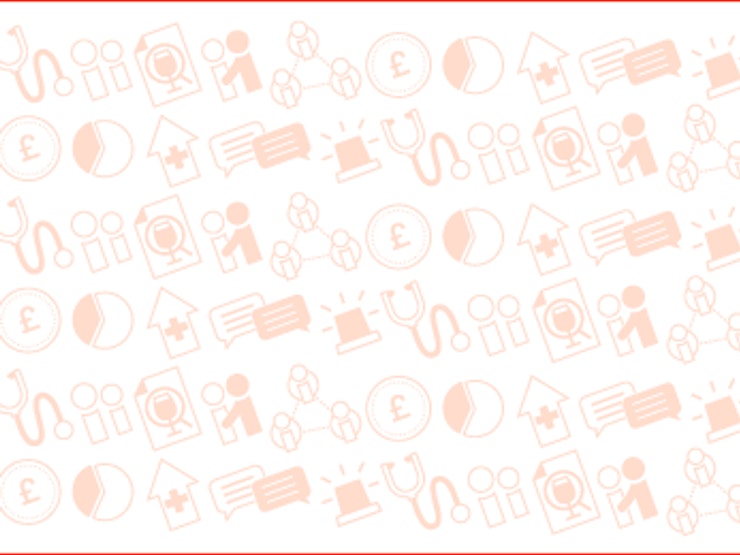Note: This report was funded and/or written by our predecessor organisation, the Alcohol Education Research Council (AERC).
15 November 2007
Researchers:
Dr Alasdair Forsyth, Neil Davidson and Jemma Lennox while at the Glasgow Centre for the Study of Violence in Glasgow Caledonian University, Neil is currently at the Scottish Institute for Policing Research in the University of Dundee.
Key findings
Observational Research at Licensed and Unlicensed Convenience Stores
- The 13 licensed shop premises stocked a very similar range of beverages, usually those identified in previous research as being associated with under-age or anti-social drinking (e.g. white cider, perry, tonic wine and other fortified or caffeinated flavoured beverages).
- There was considerable variance between licensed stores in terms of where alcohol products were shelved (e.g. if self-service or chilled).
- There was also variance between licensed stores in terms of the prominence of proof of age signage and in the existence or otherwise of other alcohol harm-reduction messages.
- The extent of physical incivilities in the vicinity of the 17 shops also appeared to vary, though in some cases this may merely have been a reflection of the surrounding area, rather than their licensed status.
Interviews with Shop Servers
- Interviewees in licensed convenience stores invariably cited alcohol as being among their best selling products (particularly tonic wine). Indeed some stated alcohol sales could account for around half their income and that their shop would struggle to survive without a drinks license.
- Competition from the major supermarkets was seen as a major threat to the survival of local convenience stores. Alcohol sales were seen as an important factor in competing against the two major superstores located in the town. However even this business was seen as being under threat.
- As well as their very low prices, the security / serving polices adopted by the two local superstores were seen as having a ‘knock-on effect’ for local shops, pushing nuisance customers in their direction (e.g. neither superstore stocked tonic wine and one set proof of age at 25 years).
- All interviewees in licensed convenience stores expressed a high level of concern about the legal and social issues surrounding the sale of alcohol to under-18s (though less so about selling to intoxicated or other troublesome customers) and had taken steps to prevent this from happening (e.g. keeping a ‘book’ recording regular customers photo ID).
- Of particular concern were adults who acted as agents for under-18s. Licensed convenience store servers felt that they had an advantage over the major supermarkets in this respect in that being local they knew their customers, their age and what they were likely to buy. One store had put restrictions on sales of products thought to be preferred by under-18s (e.g. tonic wine) although this was felt to have resulted in young people asking their agents to buy other beverages instead (e.g. spirits).
- This local aspect of their job was viewed in a very positive light by convenience store servers, who often commented on how important their shop was to the community. These shops survival was seen as being especially important to the poor, the young and the elderly, who were less able to access the superstores (i.e. having no car) for basic provisions and for whom the local shop could also be a social centre.
- One of the unlicensed stores sold petrol (one of the two unlicensed stores which did not provide an interview doubled as a post office) and it was felt that in order to survive competition from the supermarkets without a license an additional function such as these was needed.
- The unlicensed shop which served only as a convenience store experienced remarkably little crime or anti-social behaviour. By contrast the licensed stores experienced considerable problems, often directly alcohol-related (this was also true of the unlicensed store which sold petrol and was open 24 hours). In the extreme some licensed convenience stores had been victims of violent armed robberies.
Survey of Alcohol-related Physical Incivility
- 1,406 items of alcohol-related detritus were brand identified and photographed. This total includes bottles (glass or and plastic), cans, caps (crown or screw-in) and packaging, but excludes a large amount of (mainly green) broken glass which could not be brand identified.
- Of 589 items of brand identified alcohol-related glassware, only one third was intact, leaving 395 items of broken glass (arguably the most risky form of alcohol-related detritus) present in the Study Area at the time of the research, which coincided with the start of the school holidays. Incredibly, the majority of this glassware was ‘Buckfast’ tonic wine bottles, which were significantly more likely to be in a smashed condition than other brands (54.0% of glassware, 44.3% intact: 58.7% smashed).
- Apart from Buckfast tonic wine, it was noteworthy that the photographed items of alcohol-related detritus differed by brand from those prominently observed in convenience stores (lager, 41.1%, was the most commonly photographed beverage, followed by tonic wine, 35.1%, then vodka 6.3%). However, it should be stressed that this survey took place in residential neighbourhoods and not in the locations where outdoor consumers of products such as large volume plastic bottles of white cider (which constituted less than 1.0% of photographed detritus) have been found to congregate by previous research (e.g. parks or city centres).
- In contrast to alcohol-related detritus, no discarded sets of needles / syringes were recorded. There were only three potential instances of illegal drug or medical-related litter (two of foil smoking devices, one of medicine-type bottles), all of which were found beside tonic wine debris.
- Despite the relative homogeneity of the Study Area, there was a statistically significant relationship between local deprivation and amount of alcohol-related detritus (though the town’s pocket of absolute deprivation did not have an elevated level of this form of incivility).
- There was no significant relationship between the presence / absence of a licensed store and amount of alcohol-related detritus at Data Zone level. However, relatively more deprived Data Zones with a licensed store tended to have more alcohol-related detritus than those which did not, while relatively less deprived Data Zones with a licensed store tended to have less detritus than those in which there was no shop.
- Mapping the geographical location of detritus relative to the position of licensed stores within neighbourhoods did reveal that some clusters of this alcohol-related physical incivility were focused around some shops, however other clusters were not. This supports previous research indicating that outdoor drinkers tend to consume their products away from their point-of-sale. This rule could of course equally apply to outlets other than the 13 licensed convenience stores observed in this research, including the two nearby superstores (whose own brand alcohol detritus and supermarket trolleys were observed throughout the Study Area).
Introduction
In recent years there has been a great deal of concern about (and indeed research conducted into) alcohol-related disorder. However to date the bulk of this interest has focussed on problems in and around on-trade licensed premises, the night-time economy in city / town centres, and social incivility (violence, drunkenness and other anti-social behaviours). The research undertaken for this report differs from this body of previous work by focusing on off-sales premises (licensed convenience stores), located in residential neighbourhoods and the impact of alcohol-related physical incivilities (e.g. broken bottles) within the communities which they serve. It has been contended that the presence of such incivilities make neighbourhoods less desirable places in which to live, or run a business (e.g. shops), and, as with illegal drug litter, represent a serious environmental health / community safety issue, particularly to children and young people.
This research was conducted in a mid-sized town in central Scotland. Although the communities studied (eight residential neighbourhoods within this town) were all post-war social housing developments, it should be stressed that the most remarkable feature of the geographical area / town selected for this research was the relative absence of any extremes of poverty and affluence (data from the Scottish Index of Multiple Deprivation revealed there was only one small pocket of absolute deprivation and no exceptionally non-deprived census Data Zones within the Study Area, which comprised 30 such zones, and had a total population of around 23,750). Correspondingly, rates of alcohol-related hospital admissions across the town (and over time) fluctuated around the Scottish national average. It should also be stressed that, as this research was funded by an AERC small grant, the unique use of mixed methods, and findings reported here, are very much exploratory in nature (i.e. a pilot).
Methods
Three complementary methods were used to examine the issues above. The first was an observational survey of 13 licensed and four unlicensed convenience stores operating in the eight residential neighbourhoods comprising the Study Area. This phase of the research investigated how alcohol was promoted, whether proof of age or harm-reduction measures were in place (in a similar fashion to ‘Operation Storefront’, which examined tobacco promotions at point-of-sale in the USA) and the presence / absence of physical incivilities in the shops’ vicinities (e.g. vandalism). Secondly, in order to assess the retailers’ views on the above issues, brief qualitative interviews were conducted with serving staff in a sub-sample of eight of the shops observed, six of which were licensed for the sale of alcohol. Finally, the extent of alcohol-related physical incivilities was measured by photographing all items of alcohol-related detritus (and also any comparable drug litter) present within the confines of the eight residential neighbourhoods served by these 17 convenience stores.
Implications
Though very much a pilot study, this research has highlighted a number of issues relating to community safety and the sale of off-trade alcohol in residential neighbourhoods, each of which require further research:
- The sheer scale of brand identifiable alcohol-related detritus in residential neighbourhoods would seem to represent a form of free, viral, advertising, and one which is particularly easily noticed by children.
- Alcohol-related broken glass is clearly a neglected environmental health concern (in comparison to say drug litter). Measures to combat this might include products shown to be prevalent amongst street detritus being manufactured in plastic containers (e.g. Buckfast tonic wine).
- Concepts such as ‘the polluter pays’ may be impossible to enforce upon off-sales premises as consumers drink away from point-of-purchase(s).
- Polices aimed at preventing under-18’s from purchasing alcohol from off-sales, such as national ID cards or test purchasing, may only encourage increased use of adult agents by vulnerable young people.
- Moves to impose restrictions on offers at off-sales premises (currently proposed in Scotland) need to be carefully considered, as these may have less impact upon the major supermarkets than on local shops, which although they may be particularly sensitive to such measures, provide many other functions for the less advantaged in the community.
- Individuals who work in community off-sales premises would appear to be at elevated risk of being victims of crime, in comparison to say their counterparts working in similar unlicensed local convenience stores or in one of the major supermarkets’ (licensed) superstores.
- Although the scale of alcohol-related physical incivility in residential neighbourhoods appears to be large it would be simplistic to relate this to the mere presence or absence of a licensed convince store locally. Deprivation would seem to be a better predictor of this problem than local (over) provision.


